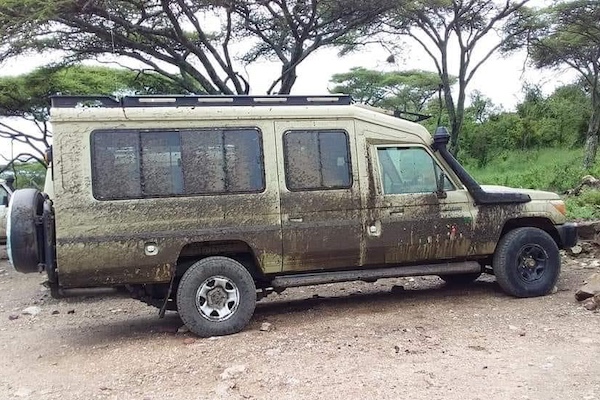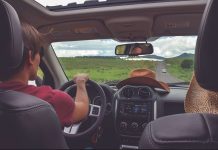Traveling through Rwanda and Uganda by car offers a unique way to explore the natural beauty, vibrant cultures, and incredible wildlife of these East African countries.
A self-drive road trip allows you the freedom to explore at your own pace, visit off-the-beaten-path locations, and enjoy the scenery in a way that organized tours may not provide. Here’s a comprehensive guide on how to rent a car and navigate through Rwanda and Uganda.
- Why Choose a Self-Drive Road Trip in Rwanda and Uganda?
Rwanda and Uganda are among Africa’s most beautiful and safe travel destinations. Both countries boast well-maintained roads, stunning landscapes, friendly locals, and an array of attractions, from Rwanda’s picturesque hills to Uganda’s diverse national parks. Here are some reasons to choose a self-drive trip:
- Flexibility: You can set your own pace, change your itinerary on the go, and spend as much time as you like at various sites.
- Cost-Effectiveness: Renting a car and self-driving can often be cheaper than joining guided tours, especially if traveling in a group.
- Adventure: The freedom to explore remote areas, small villages, and scenic spots off the usual tourist path adds a layer of adventure to your trip.
2. Choosing the Right Car Rental Company
When you rent a car in Uganda, or Rwanda,selecting a reputable car rental company is crucial. Consider the following tips when making your choice:
- Research and Reviews: Look for companies with positive reviews and a good track record. Websites like TripAdvisor, Google Reviews, and local travel forums can be invaluable for insights.
- Fleet Variety: Ensure the company offers a range of vehicles, including 4×4 SUVs, which are ideal for navigating both paved roads and rougher terrain.
- Insurance Coverage: Confirm what insurance is included in the rental price. Comprehensive insurance, including coverage for damage, theft, and third-party liability, is essential.
- Roadside Assistance: Check if the rental company offers 24/7 roadside assistance in case of breakdowns or emergencies.
- Cross-Border Policy: If you plan to drive across Rwanda and Uganda, ensure that the rental company allows cross-border travel and provides the necessary documentation.
3. Types of Cars Suitable for Rwanda and Uganda Roads
Given the variety of road conditions you’ll encounter, a sturdy and reliable vehicle is essential. Here are the best options:
- 4×4 SUVs (e.g., Toyota Land Cruiser, Nissan Patrol): These are the best choices for navigating both urban areas and rural, less-maintained roads, including game parks.
- Toyota Rav4: A smaller 4×4 option that is comfortable, fuel-efficient, and good for lighter off-road conditions.
- Safari Vans with Pop-Up Roofs: Ideal for groups planning wildlife safaris, offering a better game-viewing experience.
4. Requirements for Renting a Car
Before hitting the road, ensure you have all the necessary documents and meet the requirements set by the car rental companies:
- Valid Driver’s License: An international driver’s license or a valid license from your home country is usually acceptable. However, check with the rental company for specific requirements.
- Passport and Visa: Keep your passport with you at all times. Make sure your visa allows for travel between both countries.
- Minimum Age: Most companies require drivers to be at least 23 years old, with a minimum of two years of driving experience.
- Credit Card: A credit card is often required for the security deposit.
5. Navigating the Roads in Rwanda and Uganda
Driving in Rwanda and Uganda can be an exciting experience, but it comes with its own set of challenges. Here’s what you need to know:
- Road Conditions: Major roads between cities like Kigali, Kampala, and Entebbe are generally well-paved and in good condition. However, rural and park roads can be rough, especially during the rainy season.
- Traffic Rules: In both countries, drive on the right-hand side of the road. Observe speed limits, which are usually 50 km/h in towns and 80-100 km/h on highways.
- Police Checkpoints: These are common, especially near borders and major towns. Always carry your driving documents, rental agreement, and a reflective jacket.
- Fuel Stations: Fuel is readily available in cities and larger towns but can be scarce in rural areas. Always fill up your tank when you have the chance.
6. Crossing Borders Between Rwanda and Uganda
Crossing borders with a rental car between Rwanda and Uganda is relatively straightforward but requires some preparation:
- Documentation: Ensure you have the vehicle’s registration, insurance documents, and a cross-border permit from the rental company.
- Border Crossings: Popular crossings include Cyanika, Katuna, and Mirama Hills. Expect to pay a small fee for car clearance, and have some patience as border checks can take time.
- Visa Requirements: Check the visa requirements for both countries before travel. The East Africa Tourist Visa allows multiple entries between Kenya, Rwanda, and Uganda.
7. Top Attractions to Visit
Here are some highlights you shouldn’t miss:
- Rwanda:
- Kigali: Explore the capital city’s vibrant markets, museums, and historical sites.
- Volcanoes National Park: Home to the famous mountain gorillas and breathtaking volcanic landscapes.
- Lake Kivu: A serene lake ideal for relaxation, water sports, and scenic boat rides.
- Uganda:
- Bwindi Impenetrable Forest: Renowned for gorilla trekking, this UNESCO World Heritage Site offers incredible wildlife encounters.
- Queen Elizabeth National Park: Famous for tree-climbing lions and diverse ecosystems.
- Murchison Falls National Park: Known for the powerful Murchison Falls and rich wildlife, including elephants, giraffes, and hippos.
8. Safety Tips
- Avoid Driving at Night: Roads are poorly lit, and animals or pedestrians can suddenly appear.
- Watch Out for Wildlife and Livestock: Animals often cross roads, especially near game parks and rural areas.
- Stay Alert at Checkpoints: Be polite and comply with any requests from police or park rangers.
- Keep Emergency Numbers Handy: Have contacts for roadside assistance, your rental company, and local emergency services.
9. Cost Considerations
Renting a car in Rwanda and Uganda can vary in cost depending on the vehicle type, rental duration, and additional services:
- Average Daily Rates: A 4×4 SUV costs between $70 – $150 per day, depending on the season.
- Fuel Costs: Fuel prices fluctuate but expect around $1.30 per liter. Budget for fuel, especially if driving long distances.
- Insurance and Extras: Check if additional fees apply for insurance, extra drivers, or camping gear.
Conclusion
A self-drive road trip through Rwanda and Uganda offers an incredible opportunity to experience these countries’ rich landscapes, wildlife, and cultures on your terms. With proper preparation, the right vehicle, and an adventurous spirit, you’re all set for an unforgettable journey. Remember to respect local traffic laws, stay safe, and enjoy the freedom that comes with exploring these stunning East African destinations by car. Safe travels!










